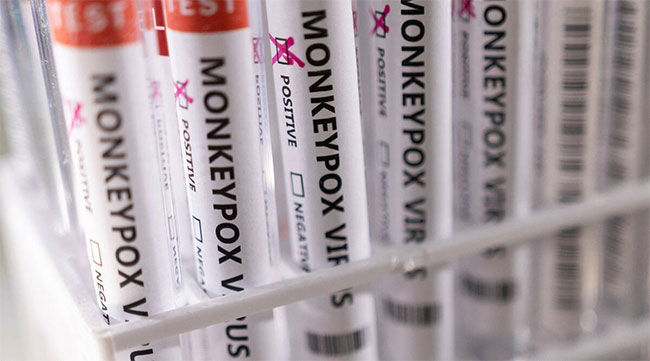(LANKAPUVATH | COLOMBO) – A Sri Lankan who returned from Dubai, United Arab Emirates (UAE) has been diagnosed as the second monkeypox case reported in Sri Lanka, according to Minister of Health Keheliya Rambukwella.
Earlier, Sri Lanka had detected its first case of monkeypox in a person who arrived from Dubai recently and he is still receiving treatments at a government hospital, according to the Ministry of Health.
The 20-year-old Sri Lankan had returned to the island on November 01.
Meanwhile, the Ministry of Health states that there is a risk of monkeypox-infected individuals arriving in Sri Lanka from foreign countries since it is a disease that continues to spread in other countries of the world.
Joining a virtual discussion held regarding monkeypox recently, Dr. Chinthana Perera, a specialist doctor of the Epidemiology Unit of the Ministry of Health recently stressed that there is a possibility of even asymptomatic patients entering Sri Lanka from foreign countries.
Dr. Perera also emphasized that it is of much importance that the health officials and Community Health Units remain alert regarding the issue, as it is possible for an outbreak of monkeypox to emerge in our country, increasing the number of patients even though the cases reported worldwide are dropping at present.
During the discussion, the Deputy Director General of Public Health Services in the Ministry of Health, Dr. Mahendra Anand expressed that currently there is no need for vaccination to control the spread of monkeypox.
Sri Lanka confirmed its first monkeypox case three months after the Director-General of the World Health Organization (WHO), Dr. Tedros Adhanom Ghebreyesus declared the infection a global emergency.
Monkeypox, a viral zoonotic infection, is usually observed in central and western Africa. The infection saw a rapid spread in many parts of the world earlier this year.
The most common symptoms of monkeypox include fever, headache, muscle aches, back pain, low energy and swollen lymph nodes followed or accompanied by the development of a rash which can last for two to three weeks.
Rash can be found on the face, palms of the hand, soles of the feet, eyes, mouth, throat, groin, and genital or anal regions of the body.
The symptoms typically last two to three weeks and usually go away on their own or with supportive care such as medication for pain and fever.
Human-human transmission of monkeypox happens through close contact with someone who has monkeypox rash including face-to-face, skin-to-skin, and mouth-to-skin contact including sexual contact, according to the WHO.
More than 78,000 monkeypox patients have been reported from 109 countries. The WHO has also placed the average fatality rate from the rare disease between just three to six percent.




